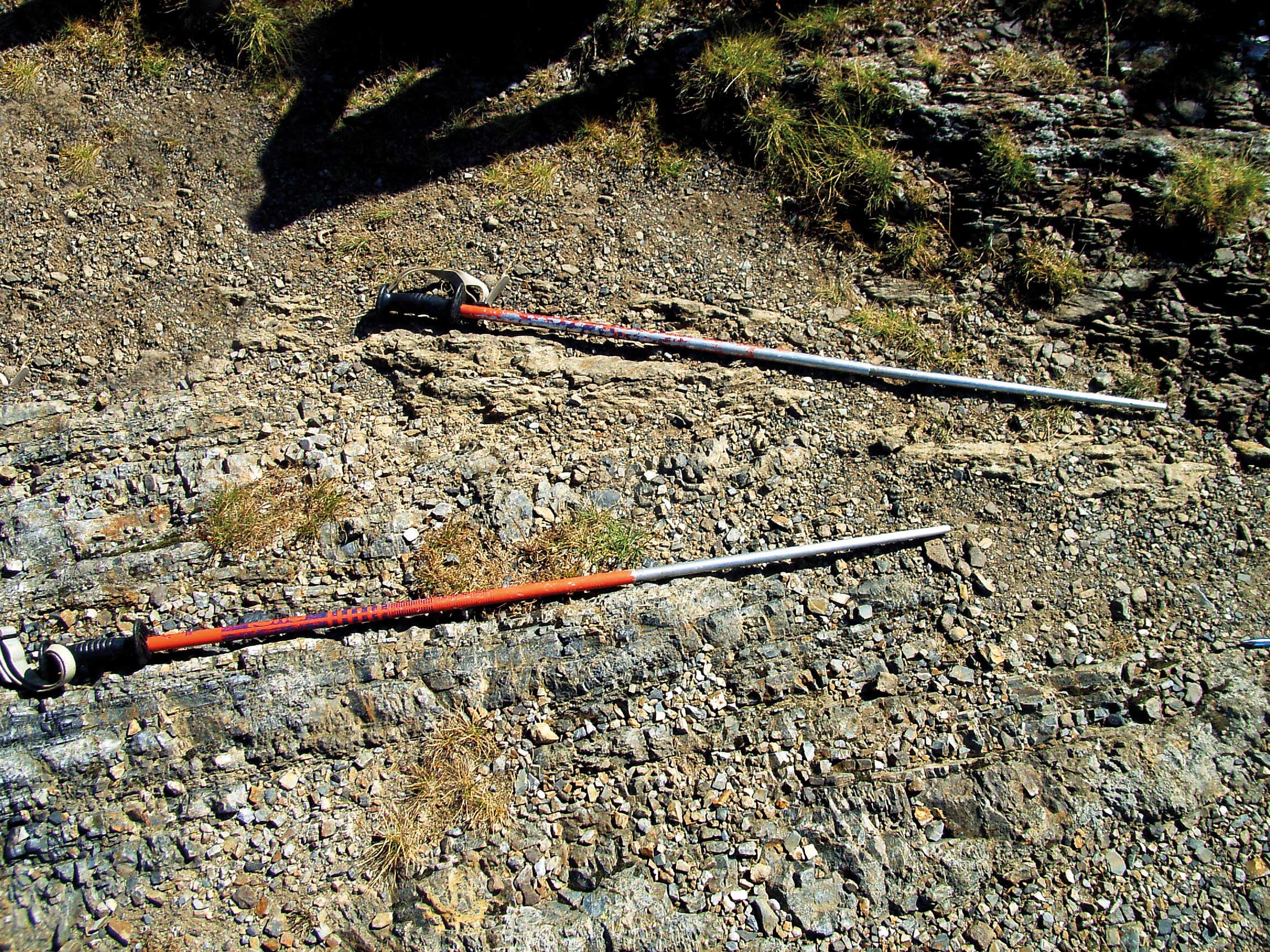At this stopping point, you will discover the key to understanding the geological evolution of the Carnic Alps, as here the two rock units which built up the Carnic Alps are in close contact. The greyish cherty basal rocks are around 370 million years old. They have been involved in two orogenic events (= mountain building processes). The first, the Variscan, took place in the Carnic Alps around 320 million years ago in the Carboniferous Period. This caused the horizontal deposits of rocks to tilt and fold. Once this turbulent phase had passed, which took some 10 million years, the succeeding rocks were horizontally deposited atop the older rocks, however, at an angle in respect to the older rocks (angular unconformity). Both layers were then involved in the second mountain building event, known as the Alpidic orogeny. The climax of this rock crumpling stage took place around 30 million years ago, and caused the rocks to be tilted again. The mountains we see today were uplifted, creating the imposing landscapes of the Carnic Alps.
Cerca
Ultimi Post
- The temporary exhibition “The Wonders of the Underworld – Ampezzo, 20th June 2020
- The Geological Museum in Ampezzo opens next Saturday
- The temporary exhibition “Fossil fish from the Friulian Alps” opens again
- Coronavirus Emergency – extraordinary closing
- Presentation conference – book “INSIDE THE CARNIC ALPS” – Udine, 25th June 2019

